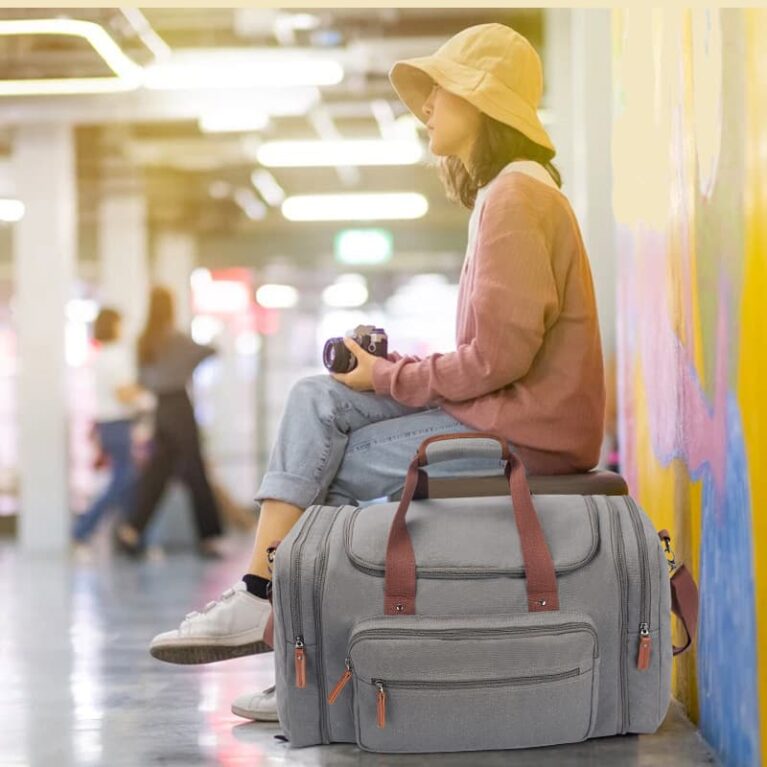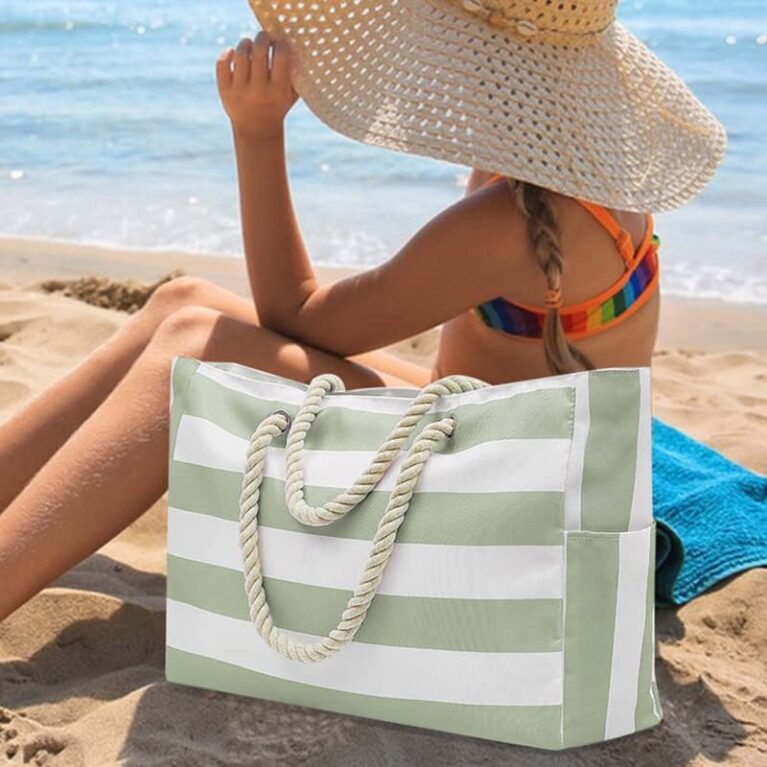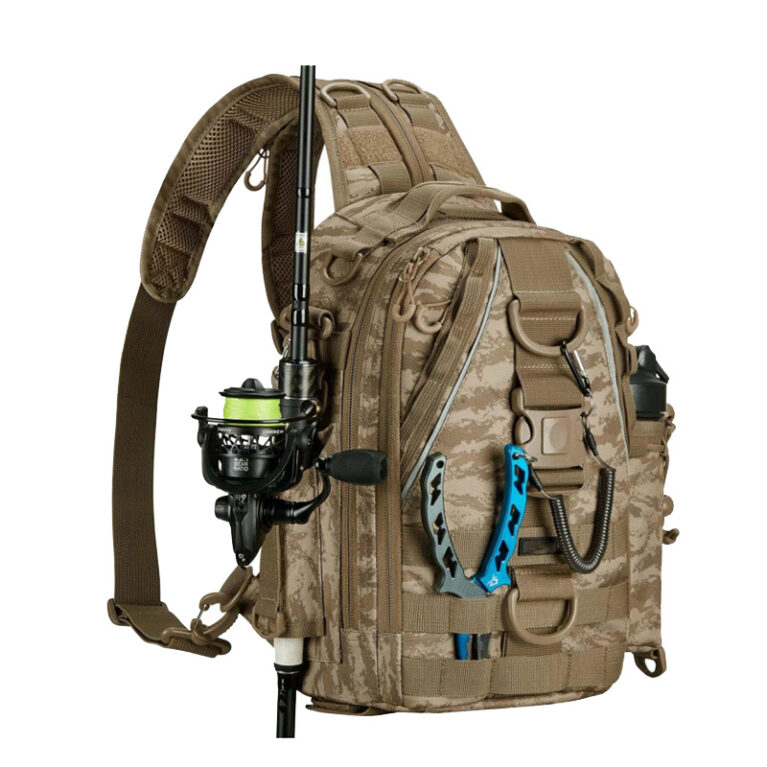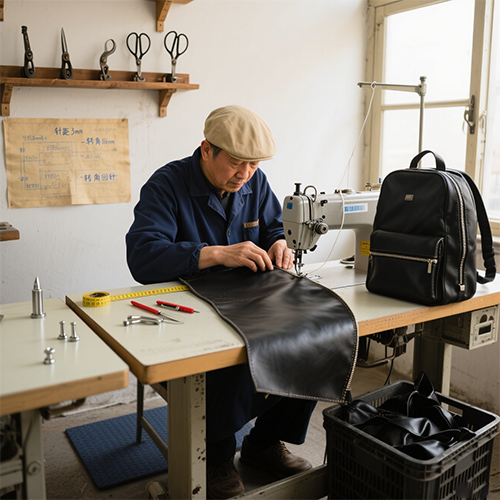Zippers may seem unremarkable, but they play a crucial role in the functionality and design of backpacks. Whether you are commuting daily, hiking, or traveling internationally, zippers ensure your belongings are safe and easily accessible. In the world of backpacks, not all zippers are created equal—different types, sizes, and brands can have a significant impact on performance and durability.
This guide covers everything you need to know about backpack zippers, and we hope it will help you choose the right one for your needs.
Common Types of Backpack Zippers
Here are some common types of backpack zippers:
1. Coil Zippers
Coil zippers are made of continuous nylon or polyester loops sewn onto the zipper tape. They are lightweight, flexible, and smooth, making them ideal for curved areas and internal compartments. Coil zippers are commonly used in backpacks, suitcases, and clothing, as they are easy to repair and do not get stuck easily.
2. Plastic zippers (Vislon Zippers)
Plastic zippers, also known as molded plastic zippers or Vislon zippers, feature teeth that are individually molded from durable plastic resin. They are lightweight, sturdy, and waterproof and UV-resistant. Plastic zippers are commonly used in outdoor and heavy-duty backpacks, making them an ideal choice for harsh environments and large-capacity compartments.
3. Metal Zippers
The teeth of metal zippers are made of metals such as brass, aluminum, or nickel and are crimped onto the zipper tape. They are sturdy and durable, with a classic, high-end appearance. Metal zippers are commonly used in fashion products, urban backpacks, and leather goods. Although they close securely, they are heavy and prone to rusting.
4. Waterproof Zipper
Waterproof zippers are specially designed to prevent water penetration and are commonly used in outdoor equipment such as backpacks and jackets. They feature a layer of rubber or plastic coating (usually TPU or PVC) covering the zipper teeth to ensure watertightness.
5. Invisible Zippers
Invisible zippers, also known as concealed zippers, are designed to be hidden within seams and are virtually undetectable when closed. Invisible zippers are commonly used in backpacks, clothing, and accessories. Their teeth are located on the back of the zipper and are covered by fabric, creating a smooth, seamless appearance.
Here is a table summarizing the types of backpack zippers:
| Zipper Type | Features |
| Coil Zippers | Made from nylon; flexible, lightweight, and resistant to bending and twisting. Ideal for curved applications. |
| Plastic Zippers | Molded from plastic teeth; lightweight and corrosion-resistant. Common in casual or outdoor backpacks. |
| Metal Zippers | Made from brass, aluminum, or nickel; strong and durable but heavier. Often used in rugged or fashion backpacks. |
| Waterproof Zippers | Designed with sealed tape or coating to prevent water ingress. Perfect for outdoor or tactical use. |
| Invisible Zippers | Hidden teeth behind the tape for a clean look. More common in apparel but sometimes used in sleek backpack designs. |
Key Components of a Zipper
A zipper consists of several key components that work together to open and close a bag or garment securely. The tape is the fabric strip on either side that holds the zipper in place, providing a stable foundation. The teeth, or elements, are the interlocking parts that mesh together, typically made of metal, plastic, or nylon, forming the core mechanism of the zipper.
The slider moves up and down the zipper, engaging or separating the teeth to open or close it. Attached to the slider is the pull tab, which allows users to operate the zipper easily with a simple grip and pull.
Additionally, top stops prevent the slider from coming off the top, while bottom stops keep it from detaching at the bottom, ensuring each component contributes to the smooth and reliable function of the zipper.

Zipper Sizes and Numbering
Zipper sizes are indicated by numbers such as #3, #5, #8, or #10, which refer to the width of the zipper teeth in millimeters when the zipper is closed. For example:
#3 Zipper – Teeth are approximately 3 mm wide
#5 Zipper – Teeth are about 5 mm wide
#8 Zipper – Teeth are around 8 mm wide
#10 Zipper – Teeth are 10 mm wide
Larger sizes offer more strength and durability, while smaller sizes are lighter and more flexible.
| Zipper Size | Teeth Width (approx.) | Common Uses |
| #3 | 3 mm | Inner pockets, small pouches, clothing |
| #5 | 5 mm | Medium-sized backpack compartments |
| #8 | 8 mm | Larger bags, duffels, tactical gear |
| #10 | 10 mm | Heavy-duty backpacks, luggage, equipment |
Top Zipper Brands in the Backpack Industry
YKK (Yoshida Kogyo Co., Ltd.) is a Japanese company and one of the world's leading zipper manufacturers. YKK zippers are renowned for their exceptional quality, durability, and smooth operation, and are widely used in backpacks, outdoor gear, and clothing. Its product range includes coil zippers, Vislon zippers, and waterproof zippers, which are trusted by global high-end brands for their reliability.
SBS is a large zipper manufacturer in China, renowned for producing a wide range of zippers at extremely competitive prices. As one of the world's largest zipper suppliers, SBS offers coil zippers, plastic zippers, and metal zippers for backpacks, clothing, and accessories. It is a popular alternative to YKK, particularly for high-value-for-money products.
IDEAL Fastener is a US-based zipper manufacturer and the world's second largest zipper producer. IDEAL is renowned for its exceptional quality, innovation, and global influence, supplying zippers for backpacks, clothing, military equipment, and bedding. Its product range includes coil zippers, molded zippers, metal zippers, and eco-friendly zippers, with factories located across the US, Asia, and Europe.
RiRi is a Swiss zipper brand renowned for its precision craftsmanship, luxurious aesthetics, and smooth performance. RiRi zippers are commonly used in high-end fashion, designer bags, and luxury accessories, and are renowned for their unique style and exceptional quality. They are highly favored by brands that pursue elegance, reliability, and high-end quality.
How to Choose the Right Zipper for a Backpack
Selecting the appropriate backpack zippers is critical for durability, functionality, and user satisfaction. The first consideration should be the intended use of the backpack. For heavy-duty outdoor or tactical backpacks, durability and weather resistance are paramount.
In such cases, Vislon (molded plastic) zippers or waterproof-coated spring zippers (e.g., YKK's AquaGuard) are ideal choices, as they are abrasion-resistant, moisture-resistant, and UV-resistant.
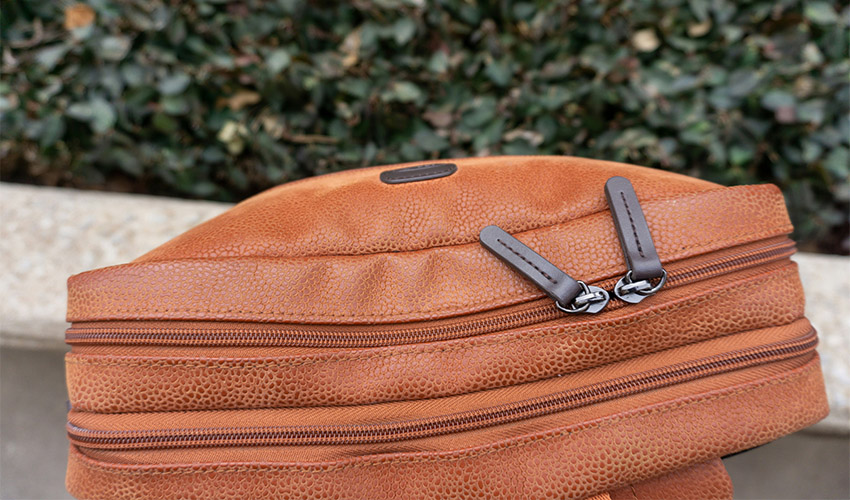
For everyday casual or travel backpacks, spring zippers are typically preferred for their flexibility and lightweight nature, especially in curved compartments or internal dividers. These zippers operate smoothly and are easy to repair if damaged.
Next, consider zipper size. Larger sizes (e.g., #8 or #10) offer greater strength and are suitable for main compartments or heavy loads, while smaller sizes (e.g., #3 or #5) are ideal for pockets or lighter compartments.
The design of the zipper and pull tab is also important—ergonomic zipper heads enhance usability, especially when wearing gloves or in cold weather. For added security, consider lockable zippers or hidden zippers.
Lastly, consider aesthetics and brand reputation. Trusted brands like YKK ensure quality and durability. Zippers that match the backpack's design in terms of material and style can enhance both appearance and functionality.
Choosing the right zipper strikes a balance between strength, usability, and appearance, resulting in the best possible backpack experience.
Trends and Innovations in Zipper Technology
Here are some of the latest trends and innovations in zipper technology for backpacks:
1. Waterproof and Weather-Resistant Zippers
Advanced coatings like polyurethane (PU) create zippers that repel water and dust, improving protection without bulky flaps.
2. Magnetic Zippers
Incorporate magnets in sliders or pull tabs to enable easier, one-handed operation and automatic alignment.
3. Self-Healing Zippers
New zipper designs and materials allow minor misalignments or damage to self-correct, extending zipper lifespan.
4. Lightweight and High-Strength Materials
Use of advanced polymers and corrosion-resistant metals reduces weight while increasing durability, perfect for ultralight or tactical packs.
5. Eco-Friendly Zippers
Sustainable materials and manufacturing processes, including recycled plastics and low-impact dyes, are gaining traction.
6. Invisible or Concealed Zippers
Zippers designed to blend seamlessly with backpack fabric, offering sleek aesthetics and improved security.
7. Customization and Branding
Enhanced options for custom pull tabs, slider shapes, and colors to strengthen brand identity.
These innovations improve functionality, durability, style, and user convenience, meeting the evolving demands of outdoor enthusiasts and urban users alike.

